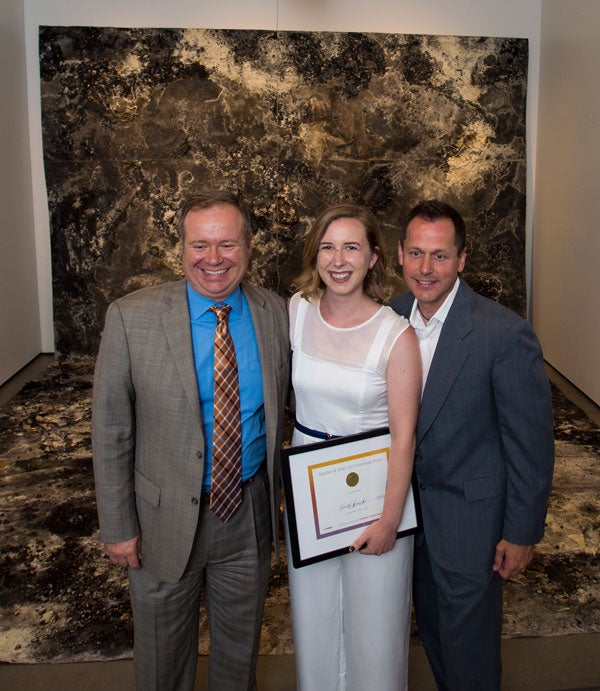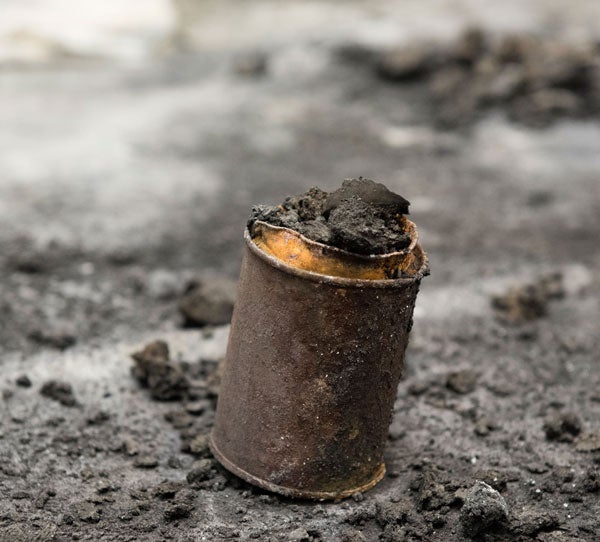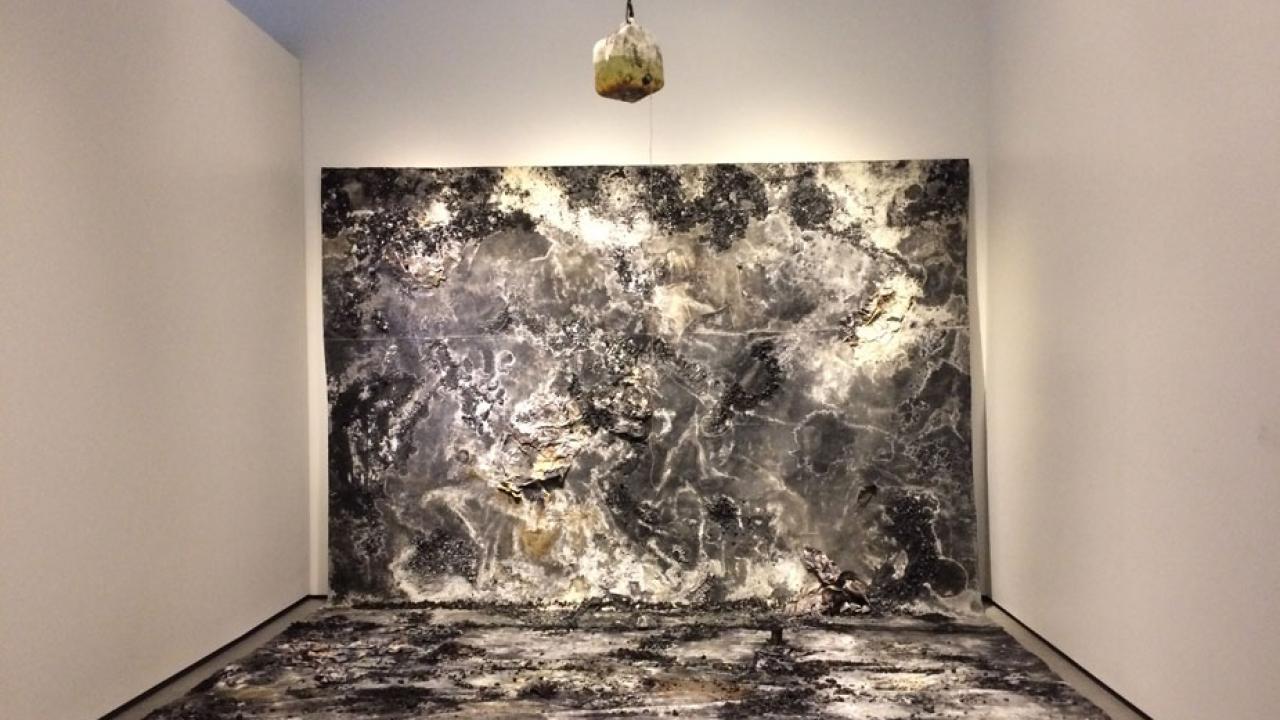UC Davis is officially back in the business of buying works of art from graduating Master of Fine Arts students — one piece a year, from one MFA grad — for the university’s Fine Arts Collection.
Except this year, the purchased art cannot go into the collection.
The winning piece, Glass Mountain, is “alive,” said the artist, Faith Sponsler, and, if left alone “will continue to change and decay.” Her work combines found objects and iron gall ink (see explanation below) on a canvas 144 inches wide that starts on the floor and climbs part-way up a wall. You can see the work through June 30 as part of the humanities graduate student exhibition, from this point forward, at the Jan Shrem and Maria Manetti Museum of Art.
Instead of putting the original Glass Mountain in the Fine Arts Collection, Sponsler said, she will provide a smaller, similar piece, treated with a fixative to stop its growth; or a drawing.
But she’s still the first annual recipient of the Keister and Allen Art Purchase Prize, from an endowment fund established by Shaun Keister, vice chancellor of the UC Davis Office of Development and Alumni Relations; and Walter Allen, a business analyst in the client services unit of UC Davis Information and Educational Technology.
In setting up the endowment, the married couple relaunched a UC Davis tradition that had gone by the wayside. “We don’t want this program to stop again, which is why we established an endowment, so it will continue in perpetuity,” Allen said in a Dateline UC Davis article earlier this year.
Read more about giving to UC Davis.

‘Incredibly honored’
Sponsler said she is “incredibly honored to be selected for this award.” She was among three finalists, the others being Arielle Rebek and Muzi Li Rowe, whose works you can also see in the exhibition at the Manetti Shrem Museum.
The winning artist said: “There’s no doubt that my time spent in this (MFA) program has made me a better artist, professional and educator.” In fact, Sponsler will stay on a lecturer this summer, in “Beginning Drawing.”
After that, she’s off to the Headlands Center for the Arts (in the Golden Gate National Recreation Area) for a graduate fellow residency.
Sponsler, who holds a Bachelor of Arts degree in studio art from California State University, Sacramento, said she came to UC Davis as a painter, but has transitioned into other media. “That's actually one of the main reasons I chose the UC Davis Art Studio MFA program,” she said. “They are renowned for encouraging a more interdisciplinary approach to art, rather than rigidly separating artists into the categories of specific disciplines.”

Today, she describes herself as an interdisciplinary artist and says collecting is a very important part of her studio practice. In her artist statement accompanying Glass Mountain, she wrote: “I often wander the line between personal memory and the physical memory of objects, and the spaces I temporarily inhabit — both natural and manmade. Collecting and processing materials from these environments, and the visual remainders — palimpsests — created by the process.
“The volatile combination of the media I use yields chance imagery and an overlay of marks, retaining the memory of object and place that is overwritten with time. Actions and relationships are visible and remembered, while operating within a world of decay, regeneration, magic, science and deception.”
‘Glass Mountain’
Sponsler explains the components of Glass Mountain:
“Iron gall ink was actually a main source of ink used in the world from the middle ages to the 18th century,” she said. The process of making the ink starts with the maceration of oak galls (also called oak apples) from oak trees.

Then, if she were following a traditional recipe, she would add an iron component (usually ferrous sulfate) to the strained gall liquid. “The oak galls contain a high concentration of tannins and gallic acid which react with the iron, turning the liquid black and creating ink.” This ink has the potential to eventually rot through the fibers on which it is applied (paper or canvas).
Traditional recipes for iron gall ink also call for gum arabic as a binder (the same binder used in watercolor paints), to make the medium more permanent. “In my practice, I am much more interested in the constant flux and ephemerality of the work, so I choose to not use a binder. Doing this allows for (white) sulfate crystals to grow.
“I also do not mix the other two components of the ink (oak galls and iron) beforehand, but instead use them separately, observing their reactions on the surface of the work itself.”
For Glass Mountain, she poured gall liquid onto rusted metal objects from a burned down, abandoned structure in a rural area of the Central Valley. The gall liquid reacted with the iron in the rust, creating ink.
In addition, her Glass Mountain exhibition at the Manetti Shrem Museum includes a container of iron suspended over her work, so that iron (ferrous sulfate suspended in water) drips onto the piece, causing it to constantly change and grow while in the show.
